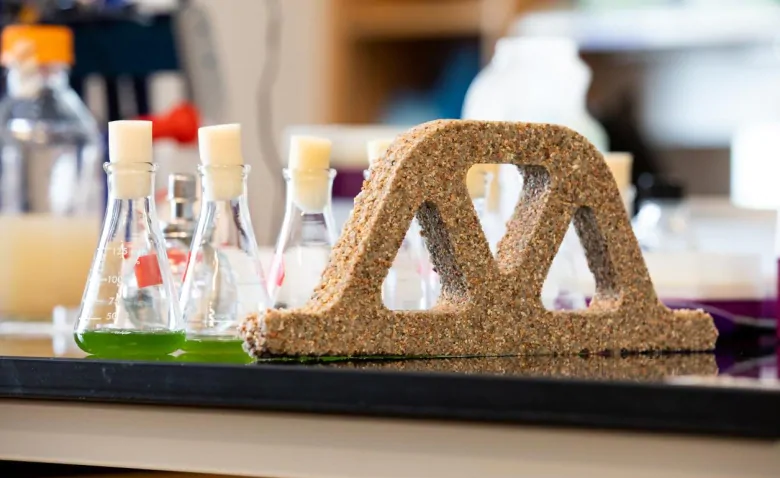Concrete made with bacteria could create self-healing green buildings

A team of American researchers has developed a new kind of biological concrete that could redefine what we mean by “green buildings.”
The concrete, developed by researchers at the University of Colorado, Boulder, uses bacteria as a binder. This leads to a material that can grow and even heal itself — much like a living organism.
“When we finally hit on a solution that brought the brick to life it really was an ‘aha’ moment,” said Wil Srubar in an interview with Bob McDonald on Quirks & Quarks.
Srubar is an assistant professor of engineering at the University of Colorado at Boulder, and led the work.
Bringing bricks to life
Concrete is the most widely used man-made material on Earth, but its production has a massive carbon footprint. Cement making is extremely energy intensive and releases large amounts of carbon dioxide. The United Nations Environment Agency has called out for “dramatic action” to reduce this footprint in order to limit global warming.
“In our system, we’re using no cement and we’re actually using an organism that thrives on carbon dioxide to manufacture the materials,” said Srubar.
In traditional concrete, sand and aggregate are bonded together with cement.
In this biological concrete, photosynthetic cyanobacteria take the place of cement. The bacteria use carbon dioxide from air to produce a material similar to limestone that glues together sand particles, making robust building blocks.
“The photosynthetic cyanobacteria that we use takes CO2, and some nutrients, and they biomineralize,” said Srubar. “It’s similar to a process of making seashells in the oceans.”
“And so it, in effect, creates tiny limestone particles as the glue in our brick.”
Srubar’s process was a little more complicated than simply mixing up a batch of sand and a bacterial culture. The team had to find the right growing conditions for the bacteria, which included appropriate levels of moisture and important nutrients, but still the process was slow.

The ultimate key turned out to be adding a jello-like polymer that increased the rate at which the bacteria grew and produced the limestone glue.
A new way to manufacture building materials
Another benefit of using bacteria for concrete is that it can be self-healing, and can replicate itself. Srubar’s team found that when they split a brick in two, they could cause the broken brick to grow in a mould by adding more sand and nutrients — the cyanobacteria would proliferate by themselves. They were able to continue to “grow” new bricks from broken fragments of their biological bricks.
“So really, what we were demonstrating is a new way to manufacture building materials,” said Srubar.
“Why not leverage something that grows at an exponential rate that self multiplies and use that to manufacture the materials we choose to build?’

Since traditional cement production is responsible for about six per cent of greenhouse gas emissions, the researchers hope that, by not only substituting this biological cement might some day make a significant dent in how much building materials contribute to global warming.
Srubar also sees a potential future use of his technology being used to build infrastructure on other planets.
“If we had to build a brand new world, we wouldn’t be burning the limestone to make the cement and we wouldn’t be melting the sand to make the glass. I think we would turn to biology to help us grow the materials with which we choose to build.”





